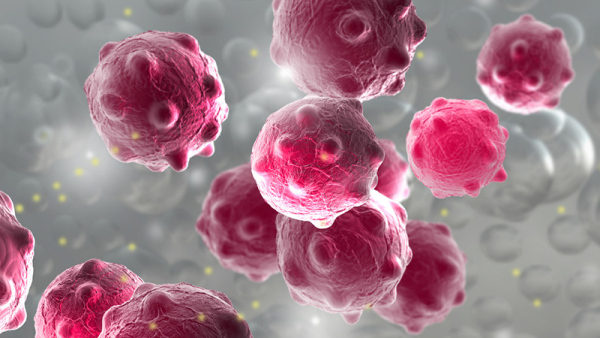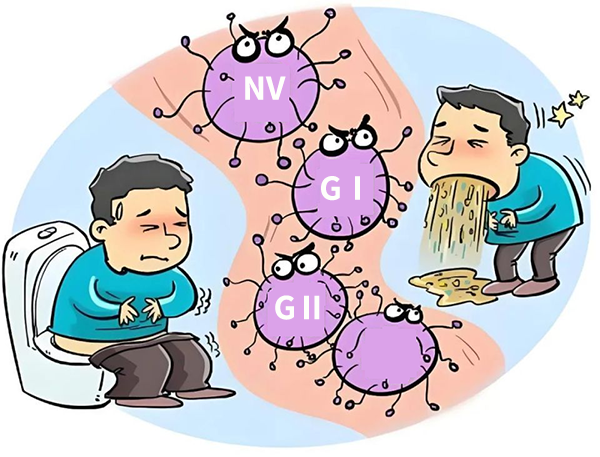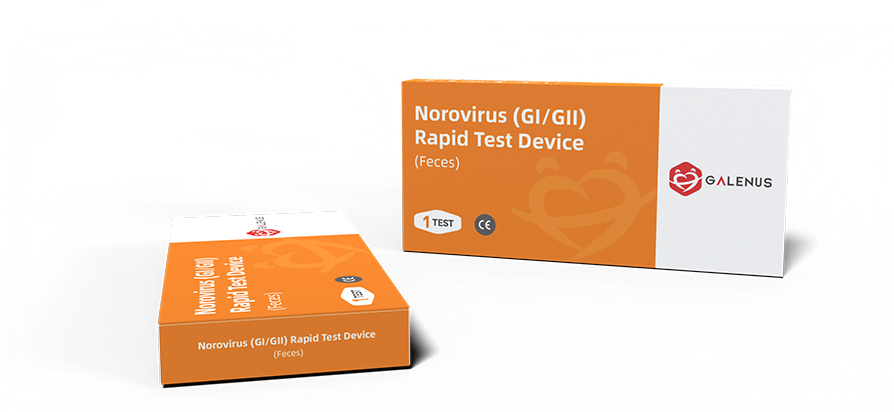Follow our latest developments
Norovirus is the leading cause of acute gastroenteritis worldwide, responsible for approximately 685 million infections annually (WHO, 2023), accounting for 18%-21% of all infectious diarrhea cases.
Southeast Asia: The annual infection rate is as high as 420 cases per 100,000 people, and some countries have become severely affected areas due to inadequate sanitary facilities.
Europe and the United States: Nursing home cluster infections constitute 85% of outbreak cases, while cruise ship outbreaks surged by 210% year-on-year. According to the U.S. CDC, 52% of outbreak cases in 2023 were linked to international travel.

Susceptible population and health hazards
Mortality rate: About 210,000 deaths per year worldwide, mainly concentrated in children under 5 years old and the elderly over 65 years old.
Children: High risk of dehydration, hospitalization rate is about 10% (rising to 25% in developing countries).
Elderly: Basic diseases (such as diabetes, cardiovascular disease) aggravate the condition, with a mortality rate of 0.3% (0.01% for the general population).
Immunodeficiency: The mortality rate of HIV-infected people, organ transplant patients, etc. rises to 0.5%-1%, and the detoxification period can be as long as 4 weeks.

Virus transmission routes and high-risk scenarios
Transmission mechanism (based on a 2022 review by The Lancet):
Fecal-oral route: contaminated water sources (the main route in developing countries), food (shellfish contamination rate is as high as 34%);
Aerosol transmission: a single vomiting can release 1×10⁸ virus particles, forming droplet nuclei with a diameter of ≤10 microns, with a diffusion radius of 10 meters;
Contact transmission: the virus survives on environmental surfaces (such as door handles, tableware) for 7-14 days, and the secondary infection rate in families is 30%-50%.
Super transmission scenarios: Medical institutions (hospital infection rate 12%), schools (children infection accounts for 52% of cases), cruise ships (enclosed space R0 value reaches 4.3).
Comparison of detection technologies and core advantages of colloidal gold method
Method |
Sensitivity |
Specificity |
Time consuming |
Cost |
Applicable scenarios |
limitation |
RT-PCR |
98%-99% |
99% |
3-6 hours |
$50-80 |
Laboratory confirmation and strain typing |
Professional equipment/personnel required |
Digital PCR |
99.9% |
99.5% |
6-8 hours |
$100-120 |
Ultra-low viral load testing, research |
High cost and low penetration rate |
Colloidal gold method |
85%-90% |
95% |
10-15 minutes |
$5-10 |
Primary medical institutions, on-site screening |
|
Electron Microscope |
60%-70% |
85% |
1-2days |
$200+ |
Scientific research (morphological identification) |
Low sensitivity and complicated operation |
Metagenomic sequencing |
Near 100% |
Near 100% |
24-48 hours |
$600+ |
Variant monitoring and outbreak tracing |
Requires professional equipment/personnel/expensive |
✅ The public health value of colloidal gold antigen testing (WHO 2023 recommendation)
Blocking the transmission chain: The detection rate is highest within 24 hours after onset, and infected people can be quickly isolated;
Resource fairness: Applicable to low-income countries and remote areas (80% of medical institutions in the world do not have PCR equipment);
Cost-effectiveness: The cost of large-scale screening is only 1/15 of that of nucleic acid testing.

Galenus Medical's Norovirus (GⅠ/GⅡ) Rapid Test Device (Feces) uses colloidal gold-labeled immunochromatography to qualitatively detect Norovirus antigen GI and GII types in fecal samples through the double antibody sandwich principle. The test is completed within 10 minutes and is stable and fast.
This product is used to assist in the early differential diagnosis of acute gastroenteritis and reduce the abuse of antibiotics; quickly screen clustered epidemics (such as schools and communities), block the transmission chain, quickly lock in pathogens, shorten the course of the disease and reduce the mortality rate of severe illness (the severe illness rate in children is about 22%), and improve the efficiency of diagnosis and treatment; the cost of a single test is low, reducing the medical burden; through simple tests, popularize knowledge on the transmission routes of Norovirus (such as water pollution and aerosol diffusion), enhance people's awareness of protection, and achieve precise prevention and control.